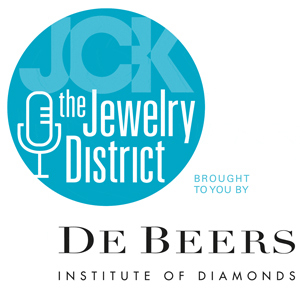
The world knows them as the Radium Girls: The group of women who in the 1920s worked as dial painters, adding the material to watch dials to make them glow. Many incurred radium poisoning because of this work.
One woman, Grace Fryer, soon will be known to the world for another reason. Her name now graces a new financial aid initiative to further the advancement of female watchmaking students along with the art and science of horology.
In January, the Horological Society of New York (HSNY) announced the Grace Fryer Scholarship for Female Watchmaking Students. Any female student who has been accepted or is currently studying full-time at a U.S. watchmaking school is eligible. The application period for this new scholarship and HSNY’s other financial-aid opportunities is now live and ends on March 1.
HSNY deputy director Carolina Navarro says the scholarship recognizes the past of the Radium Girls, honors their sacrifice, and looks toward the future of women within the horological industry.
Grace Fryer and the Radium Girls have been the subject of TV shows, films, and even a play that’s frequently performed in high schools across the country.
“We knew we wanted to expand our financial aid opportunities with a scholarship dedicated to female watchmaking students, and the story of the Radium Girls was a perfect example of how far we’ve come as an industry and how the misfortunes-turned-perseverance of these women gave way to more than just labor rights and even scientific advances,” Navarro says.
There is a great need for watchmakers now more than ever, Navarro says.
“Watchmaking can be a very fulfilling, lucrative career, and encouraging more women to study would help to level the playing field and introduce more diversity,” Navarro says. “In recent years, the number of watchmakers who retire has been greater than the number who graduate, and the industry must find a way to keep up with the demand.”
To create the scholarship, Navarro and HSNY learned as much as possible about these female dial painters, and that included reaching out to Kate Moore, author of The Radium Girls, a book about this topic.
Grace Fryer (1899–1933), a dial painter in New Jersey who was poisoned by the element, spearheaded a fight against her employer to acknowledge the deadly repercussions of using radium and demanded compensation for the women who fell prey. Navarro says Fryer spent years fighting for the Radium Girls, and their cause would go on to gain national media attention and establish legal precedents, creating labor-rights impacts and ushering in scientific advances.
Navarro says Moore connected HSNY with Art Fryer, Grace’s nephew, who supports the project.
“Art was receptive to our news, and in a way, it was important for us to get his blessing on the scholarship, as the events that occurred directly impacted his family and many other lives,” Navarro says.
In a statement, Art Fryer said: “I believe Aunt Grace would view this scholarship, which the Horological Society of New York has graciously named after her, as a symbol of progress for women. I feel Grace would be honored to be associated with HSNY in helping to welcome women into the horological craft.”
To apply, students should email a letter in PDF form to the Trustees of the Horological Society of New York that includes a biography, an explanation of their motivation to study watchmaking, and an explanation of how this scholarship would benefit them. A résumé is required, and reference letters are recommended.
HSNY offers multiple financial aid opportunities via the Henry B. Fried Scholarship for Watchmaking Students, the Benjamin Banneker Scholarship for Black Watchmaking Students, the Oscar Waldan Scholarship for Jewish Watchmaking Students, and the Howard Robbins Award for Watchmaking Schools.
“Our ultimate goal is one day be able to offer financial aid to every watchmaking student in the United States that needs it. It can be done,” Navarro says.
Top: Known as the Radium Girls, women who worked at the United States Radium Corp. often were encouraged to paint using a brush in their mouth, causing them to become ill, and, eventually, some died from the radium poisoning. This photo is circa 1922. (Photo available via the public domain and the Horological Society of New York.)
Follow me on Instagram and Twitter
Follow JCK on Instagram: @jckmagazineFollow JCK on Twitter: @jckmagazine
Follow JCK on Facebook: @jckmagazine





